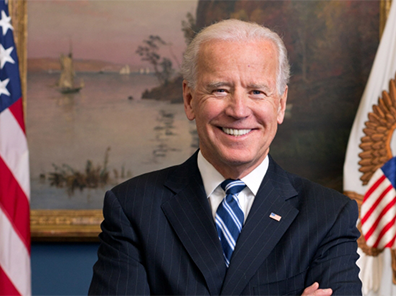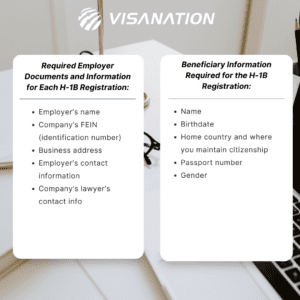Did Joe Biden Lose 85,000 Migrant Kids?
The House Oversight Committee’s National Security Subcommittee held a hearing this week on the Office of Refugee Resettlement’s Unaccompanied Alien Children Program. Robin Dunn Marcos, director of the office, appeared, but if you watch that hearing you’ll learn a lot more from the questions than the answers — because there weren’t many answers on key issues, such as the fate of 85,000 children the office has apparently lost contact with. Someone needs to put a up a large “Help Wanted” sign in Washington, because the American people are desperately in need of accountability on migrant children — both in the government and in the media.
“Unaccompanied Alien Children”. Until late 2002, unaccompanied alien children or “UACs” were not really a thing. That’s not to say that the then-Immigration and Naturalization Service (INS) — precursor to CBP and ICE in immigration enforcement and to USCIS in adjudicating immigration benefits — did not encounter, process, and in cases detain alien kids without parents or guardians. It did.
And it often received criticism for how it did so. In 1985, two organizations sued the INS on behalf of alien children being detained by the agency. The purpose of the suit, as NPR has explained, was to “challeng[e] procedures regarding the detention, treatment, and release of children”.
That case went through several levels of judicial review, including by the Supreme Court in March 1993 on the question of whether the then-controlling regulation limiting the release of those children without parents or guardians violated the constitution’s Due Process clause.
That regulation provided for the release of UACs only to their parents, close relatives, or legal guardians, “except in unusual and compelling circumstances”. If not released under this provision, an INS official was required to find “suitable placement … in a facility designated for the occupancy of juveniles.”
Justice Scalia, writing for six other justices, found that the regulation was not unconstitutional. He noted:
The parties to the present suit agree that the Service must assure itself that someone will care for those minors pending resolution of their deportation proceedings. That is easily done when the juvenile’s parents have also been detained and the family can be released together; it becomes complicated when the juvenile is arrested alone, i. e., unaccompanied by a parent, guardian, or other related adult.
The matter was remanded to U.S. district court, and in January 1997, the Clinton DOJ and the plaintiffs entered into a stipulated settlement agreement (the Flores settlement agreement, or FSA).
The FSA governed the conditions of detention and release of unaccompanied children in INS custody, but it never satisfied the advocates. When the INS was abolished and DHS created in the Homeland Security Act of 2002 (HSA), they had the chance to act.
A Democratic amendment to HSA defined the term “unaccompanied alien child” as:
a child who — (A) has no lawful immigration status in the United States; (B) has not attained 18 years of age; and (C) with respect to whom — (i) there is no parent or legal guardian in the United States; or (ii) no parent or legal guardian in the United States is available to provide care and physical custody.
That amendment also gave responsibility for the care and placement of those UACs to the Office of Refugee Resettlement (ORR) within the Department of Health and Human Services (HHS).
There was little debate when this amendment was approved, so it’s unclear why anybody thought that ORR would do a better job with those kids than the former INS had, or as the future ICE — which has authority to detain aliens generally — would do.
In any event, the change was not that significant at first, because DHS didn’t encounter many UACs to transfer. According to the Congressional Research Service (CRS), the number of UACs DHS referred to ORR in the early 2000s “averaged 6,700 annually”.
That quickly changed in 2008, however, when congressional Democrats pushed through the Trafficking Victims Protection Reauthorization Act (TVPRA).
Section 235 of the TVPRA divided UACs into two groups: (1) children from the “contiguous” countries of Canada and Mexico; and (2) minor nationals of “non-contiguous” countries (everywhere else).
Under that provision, a UAC from a contiguous country can be returned home if the child has not been trafficked and does not have a credible fear of return.
UACs from non-contiguous countries, however, must be transferred to ORR within 72 hours and placed into formal removal proceedings (UACs can’t be placed into expedited removal), even if they have not been trafficked and have no fear of return. ORR is then directed to place most of those children with “sponsors” in the United States.
That created an opening for parents, other family members, guardians, and traffickers in the United States interested in bringing children living in those “non-contiguous” countries to do so, goaded by smugglers with their own agendas.
That is my perspective, at least, but take a look at the statistics and decide for yourself: According to CRS, in FY 2008, the fiscal year before TVPRA took effect, CBP encountered fewer than 10,000 UACs at the Southwest border.
By FY 2009, when that bill was signed, that figure rose to around 20,000 UACs, 82 percent of them Mexican nationals, and just 17 percent from the non-contiguous “Northern Triangle” countries of El Salvador, Guatemala, and Honduras.
The number of UACs entering illegally kept growing thereafter, with Border Patrol apprehending more than 68,500 of them in FY 2014. By that point, however, just 23 percent of UACs came from Mexico and 77 percent from the Northern Triangle.
Faced with a surge in “non-contiguous” UACs that year, President Obama desperately wrote to Congress, asking it to provide DHS with “additional authority to exercise discretion in processing the return and removal of unaccompanied minor children from non-contiguous countries like Guatemala, Honduras, and El Salvador” — that is, to fix section 235 of TVPRA. That did not happen.
The Hottest Button. Immigration has become a “hot button” issue on Capitol Hill — right up there with gun control and abortion — although as my colleague George Fishman recently explained, members reached bipartisan accord on it as recently as 2005. And as a subset, the treatment of UACs has become the hottest button.
Obama knew that fixes were needed, but even he could not convince Congress to do anything to bring that about, and not even stunning Senate reports in 2016 and 2018 on ORR failures forced a change.
Instead of legislative action, various parties — including most notably Joe Biden — have decided to demagogue the issue for political advantage. Let me explain.
The Trump administration attempted to address the UAC issue through any number of administrative actions, including “a biometric and biographic information-sharing agreement between ORR and DHS … intended to ensure greater child safety and immigration enforcement”. That vetting took time, however, and by FY 2020, UACs were spending on average 102 days in ORR custody while that office found a suitable sponsor in the United States.
Trump had left himself vulnerable on the issue of alien children, however, due to a poorly implemented 2018 plan (“zero tolerance”) to prosecute alien adults who had brought children with them when they entered illegally in “family units” (FMUs) for “improper entry” (a misdemeanor federal offense).
When the adults in those FMUs were sent to U.S. Marshal’s Service custody for prosecution, the children were deemed “unaccompanied” and sent to ORR — a process derided as “family separation” by Trump’s legion of detractors. The plan was poorly implemented (and more poorly explained), prompting a firestorm in the press.
Trump had to quickly shut zero tolerance down, but by then the damage had been done. Anything he tried to do thereafter relating to migrant children — including a plea for additional funding to move UACs out of overcrowded CBP processing centers and into ORR shelters in the spring of 2019 — was twisted in the increasingly hostile press and played for outrage by Congress.
That 2019 crisis led to the “kids in cages” trope, in which the public was almost categorically led to believe that UACs were sitting in squalor in government detention because Trump wanted to abuse them, and not because Congress refused to provide funding.
Then-candidate Biden issued various position papers on his immigration plans, but he only highlighted — and the press only focused on — his promises to eliminate the cages and reunify separated families. Here’s how he stated it, at the top of his campaign’s immigration website:
It is a moral failing and a national shame when … children are locked away in overcrowded detention centers and the government seeks to keep them there indefinitely. When our government argues in court against giving those children toothbrushes and soap. When President Trump uses family separation as a weapon against desperate mothers, fathers, and children seeking safety and a better life.
When I say “the press only focused on”, consider that there was only one immigration question asked during the 2020 presidential debates between Biden and Trump, from Kristen Welker at NBC News:
Mr. President, your administration separated children from their parents at the border, at least 4000 kids, You’ve since reversed your zero tolerance policy, but the United States can’t locate the parents of more than 500 children. So how will these families ever be reunited?
Trump did himself no favors in response, fumbling his answer and deflecting by asking Biden “who built the cages?”
Biden Rides In. Biden then rode into office promising to reunite those families (and attempting to use Border Patrol and ICE funds to do so, although curiously separation reportedly continues under his administration), and to move UACs out of ORR custody as quickly as possible.
That all led to a brand-new UAC surge, which has eclipsed the one Obama faced in 2014. In March 2021 alone, Border Patrol agents at the Southwest border apprehended more than 16,000 non-contiguous UACs — five times as many as in the prior December.
That forced Biden to open up “temporary” shelters known as “emergency intake sites”, or “EIS”. Advocates soon complained about the conditions in those EIS, and by April Texas Governor Greg Abbott (R) was threatening to shut down the one in San Antonio, calling in the Texas Rangers (a component of the state’s Department of Public Safety), to investigate what was going on there.
By March 2022, it was revealed that ORR had lost 20,000 of the UACs it had released to sponsors under Biden, and complaints about EIS were amplified last September when the HHS Office of Inspector General issued a blistering report on the office’s failures in keeping track of children in its care and vetting potential sponsors.
Though honestly, “amplified” is likely the wrong word. Aside from me and a few congressional staffers, few if any in the media noticed what was going on, even as Biden began cutting corners in vetting potential UAC sponsors, including by revoking Trump’s biometric and biographic information-sharing agreement between ORR and DHS.
By April 17, according to HHS, “the average length of time an unaccompanied child remained in ORR’s care was 25 days”.
This only changed when the New York Times started running a series of exposés on released UACs who were being forced into grueling labor and hardship in February.
Oversight Hearing. Which brings me to this week’s hearing. Among the key takeaways were that only about 37 percent of released UACs end up with a parent, and that about two-thirds of them are working full-time jobs (often without work authorization). Respectfully, if the Biden administration believes that there is a worker shortage in the United States, migrant kids in sweatshops aren’t the solution.
Shockingly, however, Director Dunn Marcos could not (or would not) confirm in response to questioning by Rep. Andy Biggs (R-Ariz.) that her office had lost contact with “85,000 kids” it had released to sponsors. All she could say was that in 81 percent of post-release follow-up safety and welfare calls, ORR was able to make contact with the child. Meaning that in about one-fifth of UAC cases, ORR lost contact.
All procedural arguments are self-serving, but Chairman Glenn Grothman (R-Wisc.) was spot-on when he went off script to complain:
It’s particularly aggravating to see these kids come across the border and have the press not cover what’s going on, when these kids may never see their parents again, and just a few years ago we saw the press screaming about broken families.
Compare whatever coverage you may see about Rep. Biggs’ questioning on 85,000 UACs to the following report from the Washington Post in May 2018, during the Trump administration:
During a Senate committee hearing late last month, Steven Wagner, an official with the Department of Health and Human Services, testified that the federal agency had lost track of 1,475 children who had crossed the U.S.-Mexico border on their own (that is, unaccompanied by adults) and subsequently were placed with adult sponsors in the United States. As the Associated Press reported, the number was based on a survey of more than 7,000 children:
From October to December 2017, HHS called 7,635 children the agency had placed with sponsors, and found 6,075 of the children were still living with their sponsors, 28 had run away, five had been deported and 52 were living with someone else. The rest were missing, said Steven Wagner, acting assistant secretary at HHS.
Let me do the math for you. The AP report referenced showed HHS reached 79.5 percent of UACs it had released during three months in 2017 but could not contact 1,475 of them.
Dunn Marcos asserted that her office had been able to reach 81 percent of UACs it released but couldn’t even confirm that it was unable to contact 85,000 others.
The difference between 79.5 percent and 81 percent is 1.5 percent — basically a rounding error.
The difference between 85,000 and 1,475, however, is 83,525 — more lost kids than are enrolled in the Austin (Texas) Independent School District — America’s 41st largest. If somehow someone had lost every student in Austin’s public schools, every outlet would cover it like CNN covered the first Gulf War. Biggs’ unanswered contention? Crickets.
Did I mention that the headline on the May 2018 Post article was “The U.S. lost track of 1,475 immigrant children last year. Here’s why people are outraged now”? In that vein, where’s the outrage now?
I’m not saying the press should have cut Donald Trump slack on migrant kids. “Politics ain’t beanbag”, and in many ways he did himself few favors. But if the media isn’t solely composed of partisan hacks playing gotcha on such children, they should be as enraged about 85,000 lost kids now as they were about a fraction of that number in 2018. They aren’t — and that’s the true outrage.






